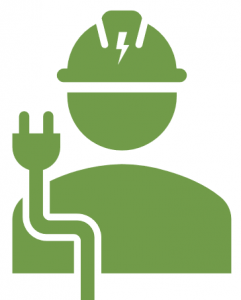 If you own a tractor, then a power take-off (PTO) generator, sometimes known as a tractor generator, can solve your electricity challenges. A PTO generator connects directly to the driveshaft of the tractor engine to generate electricity. This allows for an energy source to be available in the most remote work areas on the farm where normally an affordable power source would not be available.
If you own a tractor, then a power take-off (PTO) generator, sometimes known as a tractor generator, can solve your electricity challenges. A PTO generator connects directly to the driveshaft of the tractor engine to generate electricity. This allows for an energy source to be available in the most remote work areas on the farm where normally an affordable power source would not be available.
The benefits of a PTO generator include:
- Portable or Moveable: Depending on the make and model of PTO generator on the farm, you can move the PTO Generator to various location on the farm or in the field where you can then use power tools, operate small equipment or machines. Check with the manufacturers manual to understand the capacity and limitations of the PTO generator on your farm.
- Home or Farm Backup Power Supply: When a storm is lurking, one way to be prepared for a power outage is to have the PTO Generator on hand. Will need to check your fuel supply as well to ensure you have enough tractor fuel to operate the tractor and subsequently run the generator.
- Low Maintenance: Depending on the make and model of the PTO Generator it can have fewer internal pieces or parts which require less maintenance then your gas engine counterparts. Models with maintenance-free bearings and that are brushless are ideal candidates for low maintenance.
- Less expensive: PTO generators generally cost less than an equivalent standby or portable generator with the same power output.
Selecting the Correct PTO Generator for Your tractor:
- Choose the correct engine size for your tractor by matching the horsepower of your tractor engine to that of the PTO Generator.
- Choose the Engine Speed (RPM) by checking the operating speed of the tractor PTO shaft. Newer tractors have flexibility with the engine speeds but older tractors do not, so check the engine speed of your tractor before making the choice.
- Choose the electrical phase of single or three-phase. Single phase is the power coming from the outlets in your house and most out buildings. Three-Phase is for much higher-powered machines or equipment such as that for 208 or 480 volts
Dangers of PTO Generators:
- Electric Shock
- Fire
- Carbon Monoxide
- Noise
- Poor Housekeeping
- Entanglement
Best Practice when using and maintaining a PTO Generator:
- Read the owner’s manual before operation or maintenance.

- Only a qualified person to operate the generator following manufacturers instructions.
- Avoid contact with live terminals or receptacles.
- Avoid operating under wet conditions.
- Use only three-prong grounded plugs or extension cords.
- Ensure the unit is grounded.
- Turn off before plugging or unplugging cords.
- Operate in well ventilated areas.
- Wear hearing protection if working around the generator for long periods of time.
- Have a fire extinguisher of the correct class and size readily available.
- Maintain good housekeeping by removing materials or debris, ice, snow, or anything that could potentially ignite and cause a fire.
- Only qualified and experienced service technicians should service or maintain the unit.
- Use only manufacturer approved parts and accessories.
- Avoid hot mufflers or exhaust and engine parts when working around the generator.
- Ensure a qualified licensed electrician installs the generator for those that are not portable or moveable.

- If installing into a current electrical system ensure there is a transfer switch.
- Check the drive shaft position to ensure level before operating.
- Ensure guards are in place and maintain before operating.
- Do not step over the drive shaft when it is operating and maintain a safe distance to avoid entanglement.
- Do not try to slow or stop a drive shaft with your feet or hands.



